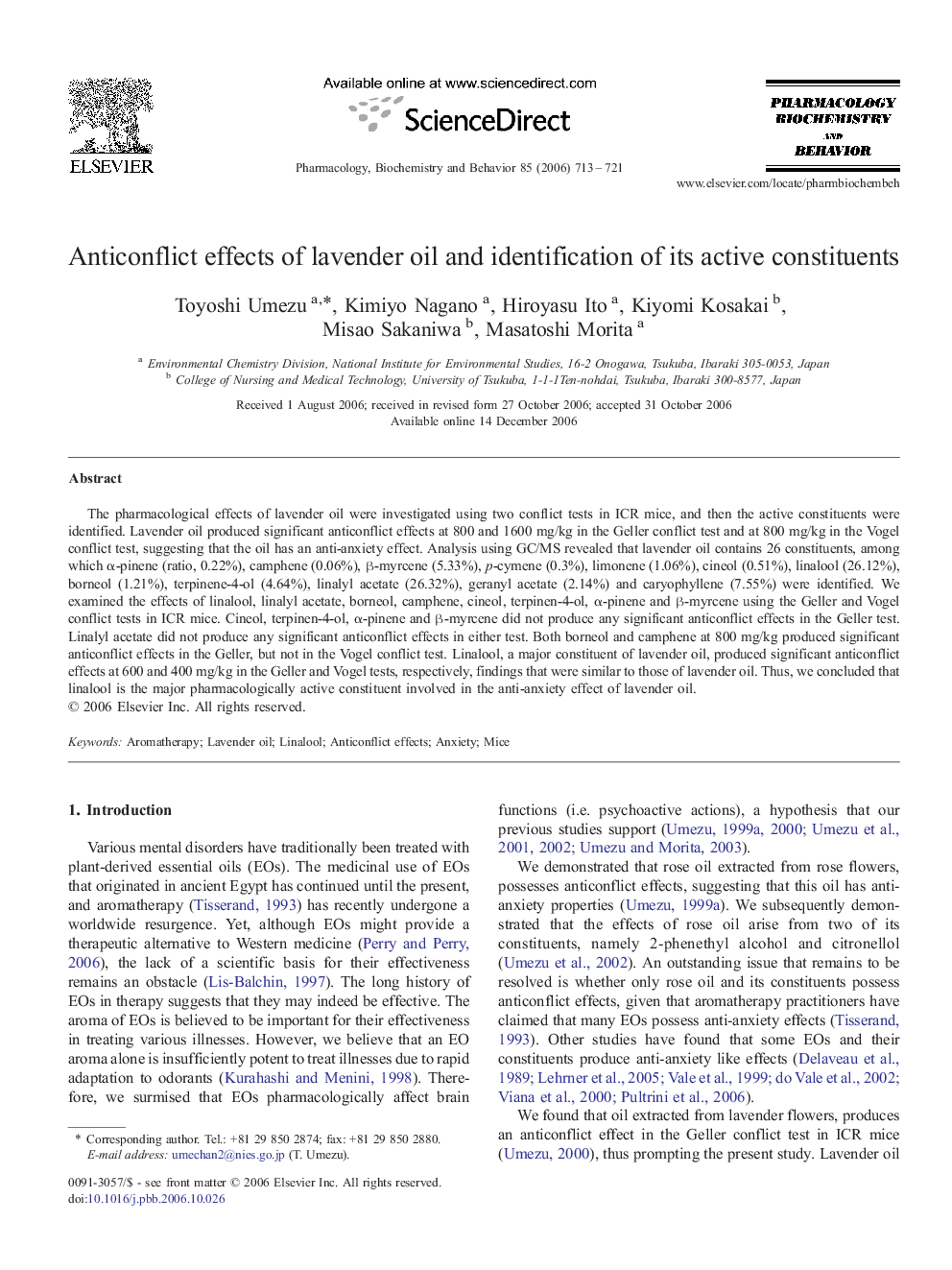| Article ID | Journal | Published Year | Pages | File Type |
|---|---|---|---|---|
| 2014234 | Pharmacology Biochemistry and Behavior | 2006 | 9 Pages |
The pharmacological effects of lavender oil were investigated using two conflict tests in ICR mice, and then the active constituents were identified. Lavender oil produced significant anticonflict effects at 800 and 1600 mg/kg in the Geller conflict test and at 800 mg/kg in the Vogel conflict test, suggesting that the oil has an anti-anxiety effect. Analysis using GC/MS revealed that lavender oil contains 26 constituents, among which α-pinene (ratio, 0.22%), camphene (0.06%), β-myrcene (5.33%), p-cymene (0.3%), limonene (1.06%), cineol (0.51%), linalool (26.12%), borneol (1.21%), terpinene-4-ol (4.64%), linalyl acetate (26.32%), geranyl acetate (2.14%) and caryophyllene (7.55%) were identified. We examined the effects of linalool, linalyl acetate, borneol, camphene, cineol, terpinen-4-ol, α-pinene and β-myrcene using the Geller and Vogel conflict tests in ICR mice. Cineol, terpinen-4-ol, α-pinene and β-myrcene did not produce any significant anticonflict effects in the Geller test. Linalyl acetate did not produce any significant anticonflict effects in either test. Both borneol and camphene at 800 mg/kg produced significant anticonflict effects in the Geller, but not in the Vogel conflict test. Linalool, a major constituent of lavender oil, produced significant anticonflict effects at 600 and 400 mg/kg in the Geller and Vogel tests, respectively, findings that were similar to those of lavender oil. Thus, we concluded that linalool is the major pharmacologically active constituent involved in the anti-anxiety effect of lavender oil.
